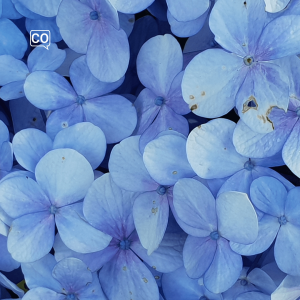Learn Spanish colours vocabulary and practise expressing likes and dislikes with phrases like "me gusta". This lesson covers basic and composite colours, real-life dialogues for everyday use, and verb conjugations related to preferences.
Listening & reading materials
Practice vocabulary in context with real materials.
Vocabulary (15) Share Copied!
Exercises Share Copied!
These exercises can be done together during conversation lessons or as homework.
Exercise 1: Reorder sentences
Instruction: Make correct sentences and translate.
Exercise 2: Match a word
Instruction: Match the translations
Exercise 3: Cluster the words
Instruction: Classify these words into two groups according to basic colors and compound or specific colors.
Colores básicos
Colores compuestos y específicos
Exercise 4: Translate and use in a sentence
Instruction: Pick a word, translated and use the word in a sentence or dialogue.
1
Rosa
Pink
2
Naranja
Orange
3
Verde
Green
4
Blanco
White
5
Maquillarse
To put on makeup
Ejercicio 5: Conversation exercise
Instrucción:
- Describe the colours of the clothes. (Describe the colours of the clothes.)
- Describe the hair colour of each person. (Describe the hair colour of each person.)
- Describe your own appearance. (Describe your own appearance.)
Teaching guidelines +/- 10 minutes
Example phrases:
|
Los zapatos son blancos. The shoes are white. |
|
Tiene el pelo castaño. She has brown hair. |
|
La mujer lleva un traje amarillo. The woman is wearing a yellow suite. |
|
Ella tiene el pelo rubio. She has blond hair. |
|
Llevo una blusa morada. I'm wearing a purple blouse. |
|
Alice lleva botas negras. Alice is wearing black boots. |
|
Ella lleva un par de vaqueros. She is wearing a pair of jeans. |
| ... |
Exercise 6: Dialogue Cards
Instruction: Select a situation and practice the conversation with your teacher or fellow students.
Exercise 7: Multiple Choice
Instruction: Choose the correct solution
1. ___ el color azul porque es tranquilo y bonito.
(___ the color blue because it is calm and pretty.)2. No ___ el color rojo, prefiero los tonos más suaves.
(I don't ___ the color red, I prefer softer tones.)3. Nos ___ mucho la pintura verde en la oficina porque da energía.
(We ___ really like the green paint in the office because it gives energy.)4. ¿___ normalmente con colores suaves para ir al trabajo?
(Do you usually ___ put on makeup with soft colors to go to work?)Exercise 8: Discovering colors at home
Instruction:
Verb Tables
Maquillarse - Put on makeup
Presente
- yo me maquillo
- tú te maquillas
- él/ella/Ud. se maquilla
- nosotros nos maquillamos
- vosotros os maquilláis
- ellos/ellas/Uds. se maquillan
Gustar - Like
Presente
- me gusta
- te gusta
- le gusta
- nos gusta
- os gusta
- les gusta
Odiar - Hate
Presente
- yo odio
- tú odias
- él/ella/Ud. odia
- nosotros odiamos
- vosotros odiáis
- ellos/ellas/Uds. odian
Amar - Love
Presente
- yo amo
- tú amas
- él/ella/Ud. ama
- nosotros amamos
- vosotros amáis
- ellos/ellas/Uds. aman
Exercise 9: Expresar gustos y disgustos: (no) me gusta
Instruction: Fill in the correct word.
Grammar: Expressing likes and dislikes: (no) me gusta
Show translation Show answersno les gusta, te gustan, no os gusta, le gusta, no le gustan, me gustan, me gusta, os gusta
Grammar Share Copied!
It's not the most exciting thing, we admit, but it’s absolutely essential (and we promise it'll pay off)!
A1.24.3 Gramática
Expresar gustos y disgustos: (no) me gusta
Expressing likes and dislikes: (no) me gusta
Verb conjugation tables for this lesson Share Copied!
Maquillarse to put on makeup Share Copied!
Presente
| Spanish | English |
|---|---|
| (yo) me maquillo | I put on makeup |
| (tú) te maquillas | You put on makeup |
| (él/ella) se maquilla | he/she puts on makeup |
| (nosotros/nosotras) nos maquillamos | we put on makeup |
| (vosotros/vosotras) os maquilláis | You put on makeup |
| (ellos/ellas) se maquillan | They put on makeup |
Gustar to like Share Copied!
Presente
| Spanish | English |
|---|---|
| (yo) me gusta | I like |
| (tú) te gusta | You like |
| (él/ella) le gusta | he/she likes |
| (nosotros/nosotras) nos gusta | we like |
| (vosotros/vosotras) os gusta | You like |
| (ellos/ellas) les gusta | they like |
Odiar to hate Share Copied!
Presente
| Spanish | English |
|---|---|
| (yo) odio | I hate |
| (tú) odias | You hate |
| (él/ella) odia | he/she hates |
| (nosotros/nosotras) odiamos | we hate |
| (vosotros/vosotras) odiáis | You hate |
| (ellos/ellas) odian | they hate |
Don't see progress when learning on your own? Study this material with a certified teacher!
Do you want to practice Spanish today? That is possible! Just contact one of our teachers today.
Introduction to Colours in Spanish
This lesson introduces the Spanish vocabulary related to colours, essential for describing everyday items like clothing and objects. You'll learn basic colour words such as el amarillo (yellow), el azul (blue), el blanco (white), el negro (black), el rojo (red), and el verde (green), as well as some composite colours like el marrón (brown) and el naranja (orange). These are key words to describe items around you and share preferences.
Expressing Likes and Dislikes
You will practice expressing your tastes using the verbs and phrases like (no) me gusta to say whether you like or dislike something. For example, "Me gusta mucho el color azul porque es muy tranquilo" means "I really like the colour blue because it is very calm." These simple expressions let you talk about your preferences in an everyday context.
Practical Dialogues and Scenarios
The lesson includes dialogues to help you use colour vocabulary in practical situations, such as shopping for clothes, describing coloured pencils, or talking about car colours. Example exchanges like "¿Te gusta esta camisa azul?" and "No, no me gusta el color marrón" provide realistic contexts to practice speaking and listening skills.
Verbs and Conjugation
You will also encounter verb conjugation practice with verbs related to preferences and activities, such as gustar, maquillarse (to put on makeup), odiar (to hate), and amar (to love). Understanding these helps you construct fuller sentences and express feelings about colours more naturally.
Summary
- Basic and composite colour vocabulary
- Expressing likes and dislikes using "me gusta" and its variations
- Real-life dialogues about colours in objects and clothing
- Verb conjugation relevant to preferences
- Practice with sentences and interactive exercises
Notes on Language Differences
Notice that in Spanish, colours agree in gender and number with the nouns they describe (e.g., "camisa azul" uses singular masculine form for blue, even though "camisa" is feminine, but some colours do change, such as "ropa verde" where green remains invariable). The phrase "me gusta" literally translates as "it pleases me," differing from English's simple "I like." This sentence structure is important to master for expressing preferences accurately. Additionally, the use of reflexive verbs like maquillarse shows actions done to oneself, which is a common grammatical feature in Spanish but less frequent in English. Practicing these will enhance your conversational skills significantly.




























